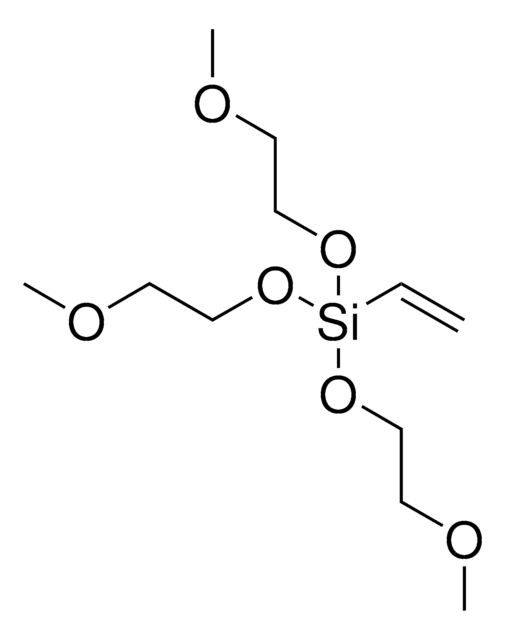推荐产品
生物源
mouse
共軛
unconjugated
抗體表格
purified immunoglobulin
抗體產品種類
primary antibodies
無性繁殖
IPC1, monoclonal
形狀
buffered aqueous solution
分子量
antigen 25-35 kDa
物種活性
hamster, mouse, rat
濃度
1 mg/mL
技術
microarray: suitable
western blot: 0.05-0.1 μg/mL using mouse brain extract
UniProt登錄號
運輸包裝
dry ice
儲存溫度
−20°C
目標翻譯後修改
unmodified
基因資訊
mouse ... Prnp(19122)
rat ... Prnp(24686)
正在寻找类似产品? 访问 产品对比指南
一般說明
Monoclonal Anti-Prion Protein (mouse IgG1 isotype) is derived from the hybridoma IPC1 produced by the fusion of mouse myeloma cells (NSO cells) and splenocytes from PrP knock-out mice immunized with recombinant mouse PrPc.
Prion is a cell surface glycoprotein present in two isoform- PrPC (a cellular isoform) and PrPSc (a disease associated isoform). Prion Protein encodes a membrane glycosylphosphatidylinositol-anchored glycoprotein that tends to aggregate into rod-like structures. The encoded protein contains a highly unstable region of five tandem octapeptide repeats. PrPC is found in the neurons of the brain and spinal cord. The prion protein is associated with several diseases like bovine spongiform encephalopathy, Creutzfeldt-Jakob disease and fatal familial insomnia.
免疫原
recombinant mouse PrPC.
應用
Monoclonal Anti-Prion Protein antibody produced in mouse is useful in enzyme linked immunosorbent assay (ELISA), immunoblotting and immunoprecipitation.
生化/生理作用
Prion protein (PrP) is a natural protein synthesized within the secretory pathway and transported to the surface of the cell where it is tethered to the cell membrane by a glycosylphosphatidylinositol (GPI) anchor. The activity of PrP is not well understood; it may be involved in copper utilization, serving to buffer copper at the synaptic cleft or to mediate re-uptake of copper into the presynapse. Alternatively, bound copper may influence PrP binding characteristics; the PrP-copper complex may be crucial for synaptic homeostasis as a result of its anti-oxidant activity. Prion plaques are of three types: unicentric (single, compact core), multicentric (two or more cores and definite border), and diffuse plaques without a definite central core.
外觀
0.01M 磷酸缓冲盐溶液,pH 7.4,含 15mM 叠氮化钠。
免責聲明
Unless otherwise stated in our catalog or other company documentation accompanying the product(s), our products are intended for research use only and are not to be used for any other purpose, which includes but is not limited to, unauthorized commercial uses, in vitro diagnostic uses, ex vivo or in vivo therapeutic uses or any type of consumption or application to humans or animals.
未找到合适的产品?
试试我们的产品选型工具.
儲存類別代碼
10 - Combustible liquids
水污染物質分類(WGK)
WGK 3
閃點(°F)
Not applicable
閃點(°C)
Not applicable
個人防護裝備
Eyeshields, Gloves, multi-purpose combination respirator cartridge (US)
Characterization of cell-surface prion protein relative to its recombinant analogue: insights from molecular dynamics simulations of diglycosylated, membrane-bound human prion protein.
DeMarco ML and Daggett V
Journal of Neurochemistry, 109(1), 60-73 (2009)
Ofira Einstein et al.
The Journal of neuroscience : the official journal of the Society for Neuroscience, 29(50), 15694-15702 (2009-12-18)
In multiple sclerosis lesions resident oligodendrocyte progenitor cells (OPCs) are present, but fail to remyelinate. In the current study we examined whether neural precursor cell (NPC) transplantation can facilitate host brain-derived remyelination. We used the chronic cuprizone-induced demyelination model in
Function of PrPC as a copper-binding protein at the synapse.
Prion Diseases, 239-249 (2000)
Microglia and the pathogenesis of spongiform encephalopathies.
Rezaie P and Lantos PL
Brain Research Reviews, 35(1), 55-72 (2001)
The cellular prion protein (PrP(C)): its physiological function and role in disease.
Westergard L
Biochimica et Biophysica Acta, 1772(6), 629-644 (2007)
我们的科学家团队拥有各种研究领域经验,包括生命科学、材料科学、化学合成、色谱、分析及许多其他领域.
联系技术服务部门








